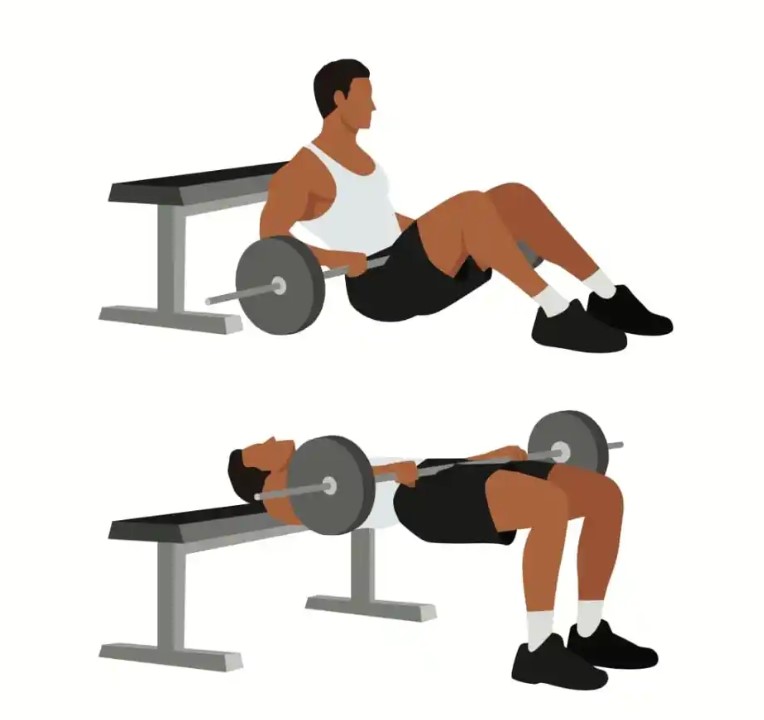BOURSESSENEGAL – The hip thrust has taken the fitness world by storm, becoming a go-to exercise for anyone looking to strengthen their glutes. With its emphasis on hip extension, this exercise not only enhances muscle growth but also improves athletic performance. In this guide, we will delve into the hip thrust, its benefits, proper techniques, variations, and how it can transform your fitness routine.
What is a Hip Thrust?
Understanding the Hip Thrust
The hip thrust primarily targets the gluteus maximus, the largest muscle in your body. This exercise involves extending your hips while your upper back is supported on a bench or platform. By pushing through your heels, you lift your hips, effectively engaging your glutes. Unlike traditional squats, the hip thrust isolates the glutes more, making it an effective choice for building strength and size.
Benefits of Performing Hip Thrusts
Including hip thrusts in your workout routine can lead to numerous advantages. First and foremost, they help to build and shape the glutes, enhancing your overall physique. Furthermore, strong glutes contribute to better posture, improved performance in sports, and reduced risk of injury.
How to Perform a Hip Thrust Correctly
Step-by-Step Instructions
To reap the benefits of hip thrusts, it’s crucial to perform them correctly. Follow these steps:
- Setup: Begin by sitting on the floor with your upper back against a bench or platform. Roll a barbell over your legs until it rests on your hips.
- Positioning: Plant your feet flat on the ground, shoulder-width apart. Your knees should be bent at about a 90-degree angle.
- Lift: Press through your heels and thrust your hips upward. Squeeze your glutes at the top of the movement.
- Lower: Slowly lower your hips back to the starting position, maintaining control throughout the movement.
- Repetitions: Aim for 3 sets of 8-12 repetitions, adjusting the weight as necessary.
Common Mistakes to Avoid
To maximize the effectiveness of hip thrusts, avoid these common pitfalls:
- Incorrect Foot Placement: Ensure your feet are flat and positioned correctly. Improper placement can lead to unnecessary strain on your lower back.
- Rounding Your Back: Maintain a neutral spine throughout the exercise. Rounding your back can increase the risk of injury.
- Not Engaging the Glutes: Focus on squeezing your glutes at the top of the movement to fully engage the muscle.
Variations of Hip Thrusts
1. Single-Leg Hip Thrust
The single-leg hip thrust adds an extra challenge and targets your glutes even more. To perform this variation, extend one leg while performing the thrust. This not only increases glute engagement but also improves stability and balance.
2. Elevated Hip Thrust
Using an elevated surface, such as a bench or box, allows for a greater range of motion. This variation enhances the stretch of your glutes and can lead to greater muscle activation.
3. Resistance Band Hip Thrust
Incorporating resistance bands adds extra tension and activates your glutes throughout the entire movement. Loop a band around your thighs just above your knees. This variation helps to prevent your knees from caving in, promoting proper alignment.
Incorporating Hip Thrusts into Your Routine
Finding the Right Frequency
To see results, aim to incorporate hip thrusts into your weekly routine 1-2 times. Combine them with other lower body exercises such as squats and deadlifts for a well-rounded workout.
Sample Workout Routine
Here’s a sample lower body workout that includes hip thrusts:
- Warm-Up: 5-10 minutes of dynamic stretching and mobility exercises.
- Hip Thrusts: 3 sets of 10-12 reps.
- Squats: 3 sets of 8-10 reps.
- Deadlifts: 3 sets of 8-10 reps.
- Lunges: 3 sets of 10 reps per leg.
- Cool Down: Stretching and foam rolling.
The Science Behind Hip Thrusts
Muscle Activation
Research shows that hip thrusts activate the gluteus maximus more effectively than squats. A study conducted by the American Council on Exercise found that hip thrusts produce higher levels of glute activation compared to traditional weightlifting exercises.
Hormonal Benefits
Performing hip thrusts can also stimulate the release of anabolic hormones like testosterone and growth hormone, which are crucial for muscle growth and recovery.
Conclusion: Embrace the Hip Thrust
Incorporating hip thrusts into your workout routine can transform your fitness journey. With their focus on the glutes, these exercises not only enhance strength and size but also contribute to overall athletic performance. Remember to maintain proper form, avoid common mistakes, and explore variations to keep your workouts engaging.
Whether you’re a seasoned athlete or just starting your fitness journey, the hip thrust is a powerful addition to your arsenal. Start today and unlock the full potential of your glutes!
REFERENCE : bujangslot



